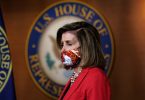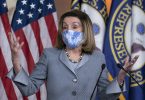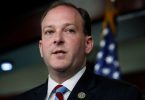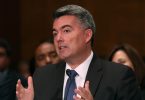Surging coronavirus infections. Bars and gyms forced to reshut their doors. Talk of new layoffs. The economy’s check-engine light is blinking red again.
As lawmakers return to work next week to debate a new stimulus package with a price tag in the trillions, the summer Covid-19 sequel is playing a lot like the spring original. The urgency this time isn’t so much to cushion the economic blow, but to keep the nascent economic recovery on track.
The worrying data points are accumulating:
California, accounting for nearly 15 percent of the national economy, abruptly shut down many businesses on Monday, following new closures in eight other states. The number of Americans who say they’re unemployed has risen over the past three weeks, the Census Bureau has said. And leaders of some the nation’s largest companies warned this week that they’re bracing for a longer, more painful recession than they initially expected.
“The concern now is that as Covid-19 cases rise around the country we might be headed into a roller coaster recovery, where rolling waves of outbreaks crash against the economy,” Glassdoor Senior Economist Daniel Zhao told POLITICO. Data from the recruiting website found that new job listings dropped 5.5 percent at the end of June and early into July.
It’s “a sign that the recovery is stalling, which is alarming,” Zhao added.
How Congress acts in the coming days could determine both the length of the recession and the outcome of the November election — if voters head to the polls in an economy that continues to be worse than anything seen since the Great Depression.
Senate Majority Leader Mitch McConnell has said a new package will come together in the next three weeks. With the new signs of economic trouble, Republicans have signaled they may be willing to expand that package to include more federal jobless aid.
Democrats are seizing on the moment to push for an extension of emergency unemployment benefits that are due to expire at the end of July. But Republicans and the Trump administration have opposed an extension of the aid at the current level of $600 per week, arguing that workers make more on unemployment programs than they would with their paycheck.
“We’re sadly approaching the deadline for the expiration of the unemployment benefits,” House Speaker Nancy Pelosi said at a Wednesday news conference. “Imagine the uncertainty in households across America now who depend on the unemployment insurance because through no fault of their own, they have lost their jobs because of this pandemic, and they have to wait and see what the Senate will decide.”
McConnell said Monday that the next package would have a "continued emphasis on jobs, meaning unemployment insurance for those who are unable to get back to work."
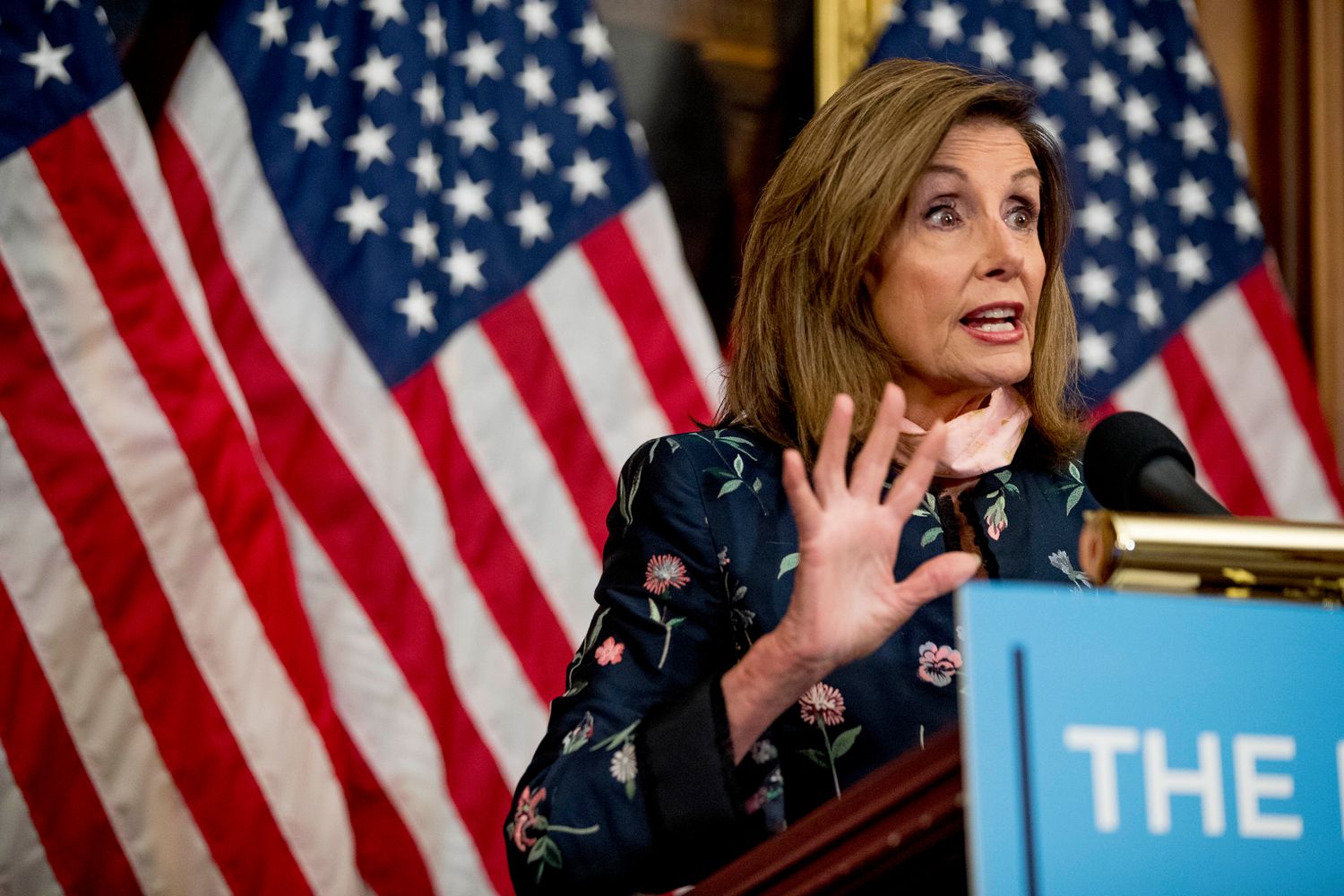
Official data is only starting to pick up the tremors of a new employment crisis. The unemployment rate has fallen over the last two months, but that doesn’t reflect new shutdowns that began in the second half of June.
Mark Zandi, chief economist of Moody’s Analytics, predicts job growth will be weaker in July than in June and May. “The economy took a huge body blow and it’s still reeling,” he said in an interview.
“And if the virus continues to intensify and we don’t get some support from Congress and the administration soon, we will go back into recession,” Zandi warned.
New weekly unemployment claims have remained above 1 million for 17 weeks, nearly double the peak seen during the Great Recession.
The Labor Department reported Thursday that 1.3 million workers applied for unemployment benefits last week, a small decline from the previous week. But that figure is seasonally adjusted to account for factors like the warmer weather and school schedules.
The DOL estimated the number of actual initial claims filed last week was 1.5 million, which would be an increase of nearly 109,000 from the week before.
In addition to that figure, another 928,000 individuals filed claims for the federal Pandemic Unemployment Assistance program, which was created in March for individuals not typically eligible for state programs including the self-employed and many workers in the gig economy.
Jobless claims are also starting to pick up again in states like California, Florida, Arizona and Georgia, where Covid-19 cases have been on the rise.
“It looked like we were coming back,” said Lee McPheters, director of Arizona State University’s JPMorgan Chase Economic Outlook Center, of Arizona’s labor market. “The May numbers were pretty strong, we added back about half the jobs we lost. And it seemed like there was, you know, kind of blue skies ahead.”
With business restrictions now in place in the state, McPheters said he expects Arizona will be going through “another perhaps one to two months of very weak job growth, maybe job losses.”
Gov. Gavin Newsom this week barred most Californians from entering houses of worship, gyms and barbershops, in an effort to prevent months of progress on containing the virus from being erased.
Any hope that California’s recovery would be quick and steep has fizzled as the pandemic numbers worsen and the brief psychological and economic lift of reopening has passed, said James Wilcox, an economist at the University of California, Berkeley’s Haas School of Business.
Many businesses — from the tiniest mom and pop stores to the largest chains —“can survive getting knocked down once or maybe twice,” he said, “but there’s a limit to how many months they can survive without operating at some reasonable level.”
“When you’re swimming underwater, two things count: depth and duration,” Wilcox said.
Florida saw its unemployment rate jump to 14.5 percent in May as the coronavirus shuttered the state’s tourist-based economy. Gov. Ron DeSantis, a Republican, has said the situation has improved as the economy has begun to reopen, but in the last few weeks the state has seen a spike in coronavirus infections that is outpacing the rest of the nation. Florida now has more than 300,000 confirmed cases.
Disney World in central Florida opened its doors over the weekend, joining other theme parks that also have reopened under new safety protocols. But the increased number of infections has led some local authorities to reimpose restrictions on restaurants. The DeSantis administration in late June told bars to stop serving alcohol on site.
State economists are scheduled to meet Friday to begin work updating the Florida economic outlook.
Texas also saw evidence of “deterioration in economic conditions in the state” in the second half of June, said Pia Orrenius, vice president and senior economist at the Federal Reserve Bank of Dallas. She cautioned that the immediate data is less reliable than other sources, but said that the rising number of new unemployment claims in the state suggest additional layoffs.
Orrenius said “it’s too early to call it” on the future of Texas’ labor market.
Amid the new shutdowns, banks and some of America’s largest companies are already bracing for more economic pain.
JPMorgan is preparing for double-digit unemployment through the first half of next year. "This is not a normal recession," CEO Jamie Dimon told reporters Tuesday, pointing to government assistance programs that have helped boost income and savings for consumers as well as home prices. "The recessionary part of this you’re going to see down the road."
In its second quarter earnings report released earlier this week, PepsiCo warned of plans for plant closures and layoffs through 2023. The company disclosed estimates that it will spend approximately $1.75 billion on "severance and other employee-related costs," a sign of job losses to come.
While unemployment fell in May and June, permanent job losses more than quadrupled at the same time to 2.9 million, according to the Labor Department’s Bureau of Labor Statistics. About 18 million people are receiving unemployment benefits, and that number could soon increase: The number of workers reporting to the Census Bureau that they’re unemployed has risen by 2.6 million in the last three weeks.
The numbers reflect an ongoing turnover as workers initially on furlough or temporary layoffs are informed that they won’t be returning to work, economists say. In fact, 42 percent, or 11.6 million, of all jobs lost through April 25 due to Covid-19 will become permanent, according to research from the University of Chicago’s Becker Friedman Institute.
"It does, of course, appear that many people as they were laid off were told that if possible, their jobs would return," said Ryan Bourne, an economist with the Cato Institute. "But of course there’s a huge range of uncertainty here. And I don’t think any of us truly know what the economy is going to look like."
Katy Murphy, Victoria Guida, Eleanor Mueller, Gary Fineout and Kellie Mejdrich contributed to this report.
Source: politico.com
See more here: news365.stream



